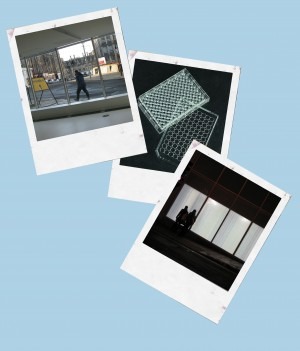
A postgraduate art student's exhibition at the Edinburgh College of Art gallery was constructed entirely from Sterilin 96-well microtitre plates filled with various shades of blue-dyed agarose gel.
The dye, a solution of bromophenol blue and xylene cyanol, is normally used as a gel loading dye for the separation of DNA and RNA by electrophoresis.
The student, Mark Eischeid, found the inspiration for the installation in the research laboratories of the British Heart Foundation Centre of Research Excellence (CoRE) at the University of Edinburgh during his time as the centre's 2009 Artist in Residence.
Eischeid describes the piece, entitled 'We live among infinities', as 'exploring ideas of conceptual and physical scale using materials found in the laboratory.
'In reappropriating scientific supplies for architectural effect, I am also exploring the nature of perception and research.' He added: 'This change in scale of the viewed object, from the microscopic to the macroscopic, inverts the scale relationship between viewer and the viewed - between researcher and research instrument,' he added.
A postgraduate student in the Art, Space and Nature MFA programme at the Edinburgh College of Art, Eischeid was awarded the CoRE 2009 Artist in Residence title in July last year and exhibited the work in February 2010.
'My time in the laboratory at the Queen's Medical Research Institute meant that I was able to consider materials that I wouldn't normally have access to,' said Eischeid.
'I was drawn to the Sterilin microtitre plate because, when filled with agarose gel and held up to the window, it multiplies the scene beyond.' The BHF Centre of Research Excellence aims to increase public awareness of cardiovascular disease and the research being carried out in the centre through the annual Artist in Residence award.
One of the ways they are doing this is by engaging with the public and encouraging young people into biomedical science by bringing the subject to life through art.




